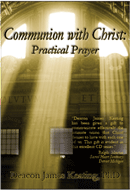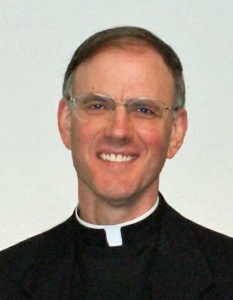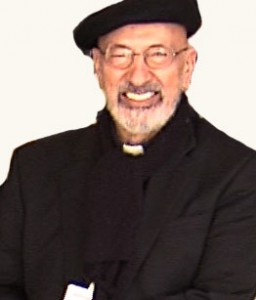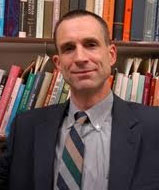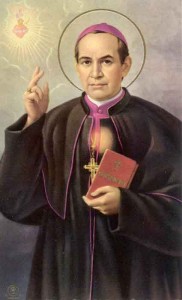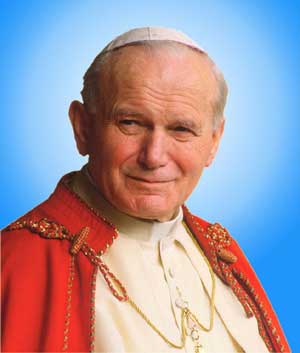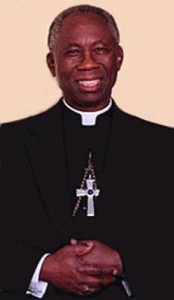 Cardinal Arinze, on September 21, 2011, spoke with priests of the Archdiocese of Omaha on the Sacred Liturgy of the Church and unique and specific role of the priest.
Cardinal Arinze, on September 21, 2011, spoke with priests of the Archdiocese of Omaha on the Sacred Liturgy of the Church and unique and specific role of the priest.
[powerpress]
Francis Cardinal Arinze discussed the Sacred Liturgy as central to the life and ministry of the priest.  He discusses what the Sacred Liturgy is,  he summarizes the ministry of the priest in its three-fold aspect and then sets out how the Sacred Liturgy effects the personal life of the priest.  How he celebrates it matters very much.
This is a very important prospective for all the members of the Church to hear!
Event sponsored by the Pro Sanctity Movement
Tags: Cardinal Arinze, catholic, catholic podcast, catholic prayer, cathollc spirituality, sacred liturgy, the Sacred Liturgy
This entry was posted on Thursday, October 27th, 2011 at 3:23 pm
You can follow any responses to this entry through the RSS 2.0 feed.
Episode 1 -Communion with Christ – Practical Prayer –The most powerful principal of prayer is that God desires us.  Prayer is a response to a presence who has entered our reality. Distractions, an enemy of prayer. Recovering the prophetic consciousness.  The highest fruit of prayer to be someone who is so transparent to God, that  God reveals His acts in our lives…the person has become prayer.
Prayer is a response to a presence who has entered our reality. Distractions, an enemy of prayer. Recovering the prophetic consciousness.  The highest fruit of prayer to be someone who is so transparent to God, that  God reveals His acts in our lives…the person has become prayer.
[powerpress]
Deacon James Keating, PhD, the director of Theological Formation for the Institute for Priestly Formation, located at Creighton University, in Omaha.
 From the Catechism of the Catholic Church paragraph 2567
From the Catechism of the Catholic Church paragraph 2567
God calls man first. Man may forget his Creator or hide far from his face; he may run after idols or accuse the deity of having abandoned him; yet the living and true God tirelessly calls each person to that mysterious encounter known as prayer. In prayer, the faithful God’s initiative of love always comes first; our own first step is always a response. As God gradually reveals himself and reveals man to himself, prayer appears as a reciprocal call, a covenant drama. Through words and actions, this drama engages the heart. It unfolds throughout the whole history of salvation.
For more information on the “Institute of Priestly Formation†and for other material available by Deacon Keating, just click here
Don’t forget to pickup a copy of “Communion with Christ†, it is one of the best audio sets on prayer…ever!
Check out Deacon Keating’s “Discerning Heart†page
Tags: catechism of the catholic church, catholic, catholic podcast, catholic prayer, cathollc spirituality, Deacon James Keating, Deacon Keating, institute for priestly formation, james keating, old testament, prayer, prophet, theological formation
This entry was posted on Thursday, October 27th, 2011 at 7:18 am
You can follow any responses to this entry through the RSS 2.0 feed.
The enemy acts like a woman, in being weak against vigor and strong of will. Because, as it is the way of the woman when she is quarrelling with some man to lose heart, taking flight when the man shows her much courage: and on the contrary, if the man, losing heart, begins to fly, the wrath, revenge, and ferocity of the woman is very great, and so without bounds; in the same manner, it is the way of the enemy to weaken and lose heart, his temptations taking flight, when the person who is exercising himself in spiritual things opposes a bold front against the temptations of the enemy, doing diametrically the opposite. And on the contrary, if the person who is exercising himself commences to have fear and lose heart in suffering the temptations, there is no beast so wild on the face of the earth as the enemy of human nature in following out his damnable intention with so great malice.
[powerpress]
The Discernment of Spirits: Setting the Captives Free – Serves as an introduction to the Spiritual Exercises of St. Igantius of Loyola
Father Timothy M. Gallagher, O.M.V., was ordained in 1979 as a member of the Oblates of the Virgin Mary, a religious community dedicated to retreats and spiritual formation according to the Spiritual Exercises of St. Ignatius. Â Fr. Gallagher is featured on the EWTN series “Living the Discerning Life: Â The Spiritual Teachings of St. Ignatius of Loyola”.
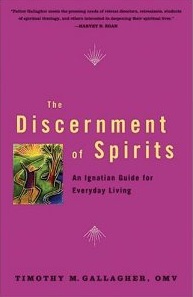 “The Discernment of Spirits: Setting the Captives Free” series is based on Fr. Gallagher’s book “Discernment of Spirits” published by Crossroads Books.
“The Discernment of Spirits: Setting the Captives Free” series is based on Fr. Gallagher’s book “Discernment of Spirits” published by Crossroads Books.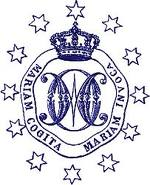
.
For more information on the “Oblates of the Virgin Mary”
.
For the other episodes in this series check out Fr. Timothy Gallagher’s “Discerning Heart†page
Tags: catholic, catholic podcast, catholic prayer, cathollc spirituality, discernment of spirits, Timothy Gallagher
This entry was posted on Thursday, October 27th, 2011 at 6:52 am
You can follow any responses to this entry through the RSS 2.0 feed.
Msgr. Esseff continues his reflections in the Chapel of Apparitions located in Paray le Monial, France.
[powerpress]

Msgr. Esseff opens up the special call priests have in bringing the Sacred Heart to the world. Â He also brings forward the prophetic message of Pope Paul VI in 1970 which he warns of the attack of the evil one on the priesthood in particular over a 40 year period. Â The priesthood of this time is truly the pierced heart of Christ.
Be sure to visit “Building a Kingdom of Love”
Tags: catholic, catholic podcast, catholic prayer, cathollc spirituality, Esseff, Paray le Monial, pope paul vi, priesthood, prophetic message, sacred heart, sacred heart of jesus
This entry was posted on Wednesday, October 26th, 2011 at 7:29 pm
You can follow any responses to this entry through the RSS 2.0 feed.
[powerpress]
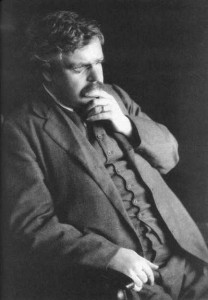 In this episode Dr. Reno discusses G. K. Chesterton his life and times, as well as his vigorous, fun, witty engagement with secular critics of Christianity which still resonate so well today.
In this episode Dr. Reno discusses G. K. Chesterton his life and times, as well as his vigorous, fun, witty engagement with secular critics of Christianity which still resonate so well today.
 Read Chesterton’s “Orthodoxy” here
“Christian Apologetics with Dr. R. R. Reno” explores numerous facets of faith and reason in the life of the Church and the world. Grounded on the work of giants, such as St. Thomas Aquinas, St. Bonaventure, Blessed John Newman, Â Blessed John Paul II, G. K. Chesterton, Blaise Pascal and Stephen Barr, Dr. Reno helps us to open our minds to make the journey to our hearts.
R. R. Reno is the editor at First Things: A Journal of Religion, Culture, and Public Life, and Professor of Theology, currently on leave from Creighton University. His theological work has been published in many academic journals. Essays and opinion pieces on religion, public life, contemporary culture, and current events have appeared in Commentary, and the Washington Post. In Fighting the Noonday Devil Reno suggests that putting ourselves at the disposal of what is real is what trains us for true piety. His other recent books include Genesis: Brazos Theological Commentary on the Bible and Sanctified Vision: An Introduction to Early Christian Interpretation of the Bible.
Tags: catholic, catholic podcast, catholic prayer, cathollc spirituality, christian apologetics, g. k. chesterton, Read Chesterton
This entry was posted on Tuesday, October 25th, 2011 at 11:24 am
You can follow any responses to this entry through the RSS 2.0 feed.
“Dispose the day…” OK, I really didn’t understand the significance of St. Crispin and St. Crispinian except for their presence in the robust guy “band of brothers” speech from Shakespeare’s Henry V…very macho “rouse the troops” moment in the play… I just figured they were warriors too…(besides I’m more of a  “Midsummer Night’s Dream” kind of Shakespeare girl anyway…)
                         Â
 That is until I read Omar F. A. Gutierrez’s fantastic blog post bringing it all together! Treat your brain and heart by visiting his blog  Regnum Novum
That is until I read Omar F. A. Gutierrez’s fantastic blog post bringing it all together! Treat your brain and heart by visiting his blog  Regnum Novum
Here, once again, is Omar Guiterrez breaking open for Discerning Hearts the beauty of Catholic Social Doctrine….
(it’s amazing where you can find it if you have eyes to see and ears to hear)
Today marks the feast of Saints Crispin and Crispian, brothers who were martyred by beheading in Rome sometime during the reign of the Emperor Diocletian (emperor from 284-305 AD).
That the saints lived is certainly true. The story of these brothers, however, comes to us from a late account that has little to suggest it’s authenticity. Generally, though, we know them to be from Rome, to have worked in Soissons, Gaul (now France), and to have been shoemakers thus earning them the title of patrons for shoemakers, cobblers, and those who work with leather.
The tale is that these two brothers, perhaps twins of noble blood, caught up in the zealous care for their faith and in love for Christ, left Rome in the 3rd century in order to spread the Gospel in Gaul. They took up the trade of the shoemaker and would not charge the poor who requested their services. By their example, and not, it seems,by any grand preaching, these two were good witnesses to the faith and converted many. When Maximian was appointed co-emperor in 285 and came to Gaul, the brothers were accused and brought before a character named Rictiovarus, whom we don’t exactly know existed but whose seathing hatred for Christians is legendary. At any rate, they were tortured mercilessly, but when the attempt to kill the saintly brothers through drowning and burning failed, Rictiovarus was driven into such a desperate fury that he threw himself into the fire prepared for the brothers thus killing himself. Eventually, Crispin and Crispian were beheaded which is a very effective way of killing someone…unless you’re St. Winifred, in which case that might not always work.  There are several things I’d like to draw out about these saints.
The first is that it was on this day 595 years ago (1415) that King Henry V led his horribly outnumbered English army into battle against the French at Agincourt, the battle so wonderfully remember today for the speech written by Shakespeare in Henry V,( a version of which can be seen above with Kenneth Branagh.)
The second thing is this, brought out in an edition of Butler’s Lives of the Saints, namely that Sts. Crispin and Crispian are a wonderful reminder that sanctity is not only for the cloistered hermit who has removed himself from society. These two never embarked on some large speaking tour throughout Gaul. They did not write any large tomes explicating the faith for the masses. They are not known for levitating or bilocation or magically producing shoes no one today can replicate with all our modern technology. No, they were simply saintly shoemakers. They were holy artisans is all, and this is a good thing. In this way they are almost the perfect patron saints for laborers, heroes of the Social Doctrine of the Church.
I’m reminded of a line from the Part I Chapter 3 of St. Francis de Sales’ classic Introduction to the Devout Life where he says:
 It is an error, nay more, a very heresy, to seek to banish the devout life from the soldier’s guardroom, the mechanic’s workshop, the prince’s court, or the domestic hearth. Of course a purely contemplative devotion, such as is specially proper to the religious and monastic life, cannot be practised in these outer vocations, but there are various other kinds of devotion well-suited to lead those whose calling is secular, along the paths of perfection. The Old Testament furnishes us examples in Abraham, Isaac and Jacob, David, Job, Tobias, Sarah, Rebecca and Judith; and in the New Testament we read of St. Joseph, Lydia and Crispus, who led a perfectly devout life in their trades:–we have S. Anne, Martha, S. Monica, Aquila and Priscilla, as examples of household devotion, Cornelius, S. Sebastian, and S. Maurice among soldiers;–Constantine, S. Helena, S. Louis, the Blessed Amadaeus, 2 and S. Edward on the throne. And we even find instances of some who fell away in solitude,– usually so helpful to perfection,–some who had led a higher life in the world, which seems so antagonistic to it. S. Gregory dwells on how Lot, who had kept himself pure in the city, fell in his mountain solitude. Be sure that wheresoever our lot is cast we may and must aim at the perfect life.
Sanctity can be found through the work which God has given us no matter what that might be. Indeed it is to be found in the guardroom, in the shop, in the court, in the home. This is the message of the Social Teaching of the Catholic Church. Sanctity and evangelization can be found through the labor of everyday life. It is less what you do than the way you do it, and the way to do anything is with the love of Christ.
Third, I want to point out that with saints whose stories are in doubt it can be tempting to write them off as the incipient pap of bygone days. There are some who actually claim that the Church has managed its control over the laity throughout the centuries by inventing such stories. I’m not making that claim, but many are tempted to think that there never was such a saint, or that we cannot glean any lesson from them, or that, poor bumpkins that they were, those ignoramuses of the early years of the Church meant well if they weren’t always truthful. This sort of temptation is what Chesterton called “chronological snobbery.†Somehow we image that in our Enlightened age we appreciate truth much more than the people of the early centuries. This would be a terrible mistake.
Stories do evolve over time, and tales can be embellished but we should never forget three things: first, that the stories were told because of some real event or real person, even if we don’t remember their name and even if our collective memories have gotten the details wrong. Second, the miraculous is not impossible. We believe in things seen and unseen, so why presume the fantastical must be unreal? Third, someone in heaven answers to the name of these saints in question. That’s what matters.  – Regnum Novum
Thanks Omar! My visits to DSW will never be the same again.
Tags: catholic, catholic podcast, catholic prayer, catholic social doctrine, cathollc spirituality, christians, emperor diocletian, guiterrez, henry v, st crispin
This entry was posted on Tuesday, October 25th, 2011 at 10:16 am
You can follow any responses to this entry through the RSS 2.0 feed.
Incorruptible Bodies of Saints
[powerpress “faith-check-with-greg-youell”]
‘Remember o man that you are dust, and to dust you shall return.’  We hear these words each Ash Wednesday to remind us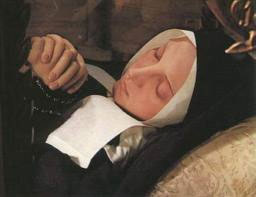 of death and judgment awaiting us all.  While our bodies are the source of so much focus in our culture, they will decay into dust, until they are ultimately resurrected and reunited with our souls at the end of the world.
of death and judgment awaiting us all.  While our bodies are the source of so much focus in our culture, they will decay into dust, until they are ultimately resurrected and reunited with our souls at the end of the world.
God has granted exceptions to this, however, in the “incorruptiblesâ€â€”saints whose bodies are miraculously preserved in tact after death, as a visible sign of their holiness.  These miracles have withstood in-depth scientific and medical examinations that rule out any possible hoaxes and make clear that they are entirely distinct from those bodies preserved through extreme temperatures or mummification.
When St. Bernadette Soubirous of Lourdes was examined in 1909, thirty years after her death, her body appeared the same as when she had been alive: her body was odorless and her skin was supple and had coloration—while the rosary in her hands had rusted over.  Today her body can still be observed and pilgrims state that looks as if she were merely asleep.
And then there’s the St. Anthony of Padua.  Years after his death his body had decayed, but God had preserved the great preacher’s tongue alone—those present reported that it was perfectly pink.
Tags: catholic, catholic podcast, catholic prayer, cathollc spirituality, miracles
This entry was posted on Monday, October 24th, 2011 at 2:23 pm
You can follow any responses to this entry through the RSS 2.0 feed.
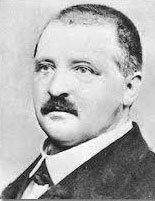 Â VATICAN CITY, 22 OCT 2011 (VIS) – This evening in the Vatican’s Paul VI Hall, the Bavarian State Opera gave a concert in honour of Benedict XVI. The programme included the Ninth Symphony and the “Te Deum” by Anton Bruckner, played by the Bavarian State Orchestra and the “Audi Jugendchorakademie”, conducted respectively by Kent Nagano and Martin Steidler.
 VATICAN CITY, 22 OCT 2011 (VIS) – This evening in the Vatican’s Paul VI Hall, the Bavarian State Opera gave a concert in honour of Benedict XVI. The programme included the Ninth Symphony and the “Te Deum” by Anton Bruckner, played by the Bavarian State Orchestra and the “Audi Jugendchorakademie”, conducted respectively by Kent Nagano and Martin Steidler.
At the end of the performance the Pope rose to thank the musicians.
Listening to Bruckner’s music, he said, “is like finding oneself in a great cathedral, surrounded by its imposing structures which arouse emotion and lift us to the heights. There is however an element that lies at the foundations of Bruckner’s music, both the symphonic and the sacred: the simple, solid, genuine faith he conserved throughout his life”.
“The great conductor Bruno Walter used to say that ‘Mahler always sought after God, while Bruckner had found Him’. The symphony we have just heard has a very specific title: ‘Dem lieben Gott’ (To the Beloved God), almost as if he wished to dedicate and entrust the last and most mature fruit of his art to the One in Whom he had always believed, the One Who had become his only true interlocutor in the last stage of his life”, the Holy Father said.
“Bruckner asked this beloved God to let him enter His mystery, … to let him praise the Lord in heaven as he had on earth with his music. ‘Te Deum laudamus, Te Dominum confitemur’; this great work we have just heard – written at one sitting then reworked over fifteen years as if reconsidering how better to thank and praise God – sums up the faith of this great musician”, Pope Benedict concluded.
“It is also a reminder for us to open our horizons and think of eternal life, not so as to escape the present, though burdened with problems and difficulties, but to experience it more intensely, bringing a little light, hope and love into the reality in which we live”.
Tags: catholic, catholic podcast, catholic prayer, cathollc spirituality, sacred music
This entry was posted on Monday, October 24th, 2011 at 12:16 pm
You can follow any responses to this entry through the RSS 2.0 feed.
“Forgiveness: A Catholic Approach” is exceptional!  Fr. Scott Hurd has penned the book that should be in 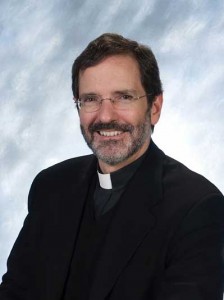 every Catholic home.  To forgive,  without exception, is the hallmark of the Christian life and one of the hardest things to do.  Every single chapter in “Forgivness” is a gem.  Whether it’s is the challenge of “not becoming a doormat”, dealing with our anger over hurts, or reconciling the fact that life isn’t necessarily fair, Fr. Hurd offers timely wisdom from the heart of the Church to the experiences of everyday life in order for us to follow the way of Jesus Christ…and to forgive.  I love this book!
every Catholic home. Â To forgive, Â without exception, is the hallmark of the Christian life and one of the hardest things to do. Â Every single chapter in “Forgivness” is a gem. Â Whether it’s is the challenge of “not becoming a doormat”, dealing with our anger over hurts, or reconciling the fact that life isn’t necessarily fair, Fr. Hurd offers timely wisdom from the heart of the Church to the experiences of everyday life in order for us to follow the way of Jesus Christ…and to forgive. Â I love this book!
[powerpress]
“All of us know that there is more to forgiveness than simply saying “I’m sorry.” In the section entitled, “Hallmarks of Forgiveness,” Father Hurd deftly outlines seven such marks of forgiveness that reflect the teaching and example of Our Lord. In Jesus, we learn how to forgive others as God has forgiven us. Forgiveness is a decision, a process, and a gift.
“Equally challenging today is the question of how to forgive. In Forgiveness: A Catholic Approach we find an entire section on this topic. With priestly wisdom, Father Hurd examines a wide variety of experiences of forgiveness and reconciliation. With examples from Scripture, Church tradition, literature, and his own ministry, he offers a useful ten-step process to aid people ready to make the decision to forgive.”
–Cardinal Donald Wuerl, from the Introduction
You can find “Forgiveness” here
Visit Pauline.org for more information
Tags: catholic, catholic podcast, catholic prayer, cathollc spirituality
This entry was posted on Monday, October 24th, 2011 at 7:21 am
You can follow any responses to this entry through the RSS 2.0 feed.
Show 7 – The Truth About Contraception part 1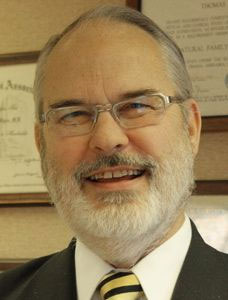
“Your Fertility Care Consultâ€
with Dr. Thomas Hilgers, founder of the Pope Paul VI Institute
for The Study of Human Reproduction
hosted by Kris McGregor
[powerpress]
listen to the entire series at Dr. Hilger’s Discerning Hearts Page
The Pope Paul VI Institute, founded in 1985 by Thomas W. Hilgers, MD, is internationally recognized for its outstanding achievements in the field of natural fertility regulation and reproductive medicine — 30 years of scientific research and educational program development; allied health professional education programs for couples and professionals; professional, caring, and morally acceptable patient services. The Pope Paul VI Institute for the Study of Human Reproduction is building a culture of life in women’s health care through its major developments — Creighton Model FertilityCare System and NaProTechnology.
Tags: catholic, catholic podcast, catholic prayer, cathollc spirituality, Contraception, human reproduction, pope paul vi institute, thomas hilgers, Thomas W. Hilgers
This entry was posted on Monday, October 24th, 2011 at 3:06 am
You can follow any responses to this entry through the RSS 2.0 feed.
‘The love of Christ arouses us, urges us to run, and to fly lifted on the wings of holy zeal . . . The man who burns with the fire of divine love is a son of the Immaculate Heart of Mary, and wherever he goes, he enkindles that flame; he desires and works with all his strength to inflame all men with the fire of God’s love. Nothing deters him: he rejoices in poverty; he labors strenuously; he welcomes hardships; he laughs off false accusations; he rejoices in anguish. He thinks only of how he might follow Jesus Christ and imitate Him by his prayers, his labors, his sufferings, and by caring always and only for the glory of God and the salvation of souls.’ – St. Anthony Mary Claret
A remarkable saint…St. Anthony Mary Claret who lived during the turblent years of the 1800’s in Latin America, namely Cuba. He had a great love for the Blessed Virgin Mary and her Immaculate Heart. More on his life can be found here…
Tags: anthony mary claret, blessed virgin mary, catholic, catholic podcast, catholic prayer, cathollc spirituality, Church, immaculate heart of mary, jesus christ, latin america, love, St. Anthony Mary, St. Anthony Mary Claret, sufferings
This entry was posted on Monday, October 24th, 2011 at 12:52 am
You can follow any responses to this entry through the RSS 2.0 feed.
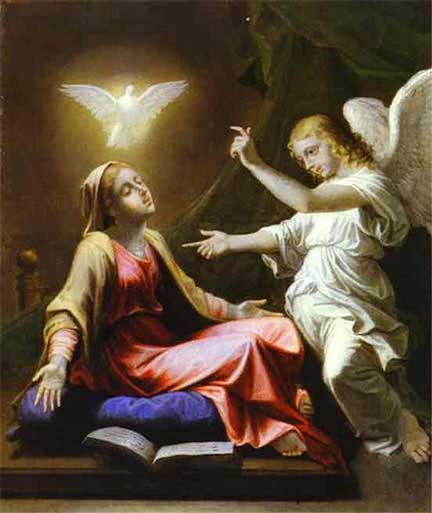 The lyrics and translation are as follows:
The lyrics and translation are as follows:
Hail Mary, full of grace, the Lord is with thee.
Blessed art thou amongst women, and blessed is the fruit of thy womb, Jesus.
Holy Mary, Mother of God, pray for us sinners, now and at the hour of our death.
Amen
Ãve MarÃa, grátia pléna, Dóminus técum.
BenedÃcta tu in muliéribus, et benedÃctus frúctus véntris túi, Iésus.
Sáncta MarÃa, Máter Déi, óra pro nóbis peccatóribus, nunc et in hóra mórtis nóstrae.
Ãmen.
Tags: catholic, Catholic Hymns of Praise, catholic podcast, catholic prayer, cathollc spirituality, death, hail mary, Holy Mary, women
This entry was posted on Sunday, October 23rd, 2011 at 12:06 am
You can follow any responses to this entry through the RSS 2.0 feed.
 Msgr. Esseff continues his reflections in the Chapel of the Apparitions in Paray le Monial, France.
Msgr. Esseff continues his reflections in the Chapel of the Apparitions in Paray le Monial, France.
[powerpress]
Msgr. Esseff discusses the clash of the two kingdoms….salvation history in light of the Sacred Heart of Jesus. Â In every heart there is a collision between the force of light and the force of darkness, between the force  of lies and the force of truth. Â It’s a collision that is occurring throughout the world.
of lies and the force of truth. Â It’s a collision that is occurring throughout the world.
The Sacred Heart calls us to love to win the battle.
for more visit Msgr. Esseff’s website : Building A Kingdom of Love
Tags: catholic, catholic podcast, catholic prayer, cathollc spirituality, Esseff, John Esseff Msgr, sacred heart of jesus
This entry was posted on Saturday, October 22nd, 2011 at 9:40 am
You can follow any responses to this entry through the RSS 2.0 feed.
Here is Pope Benedict XVI’s homily for the Mass of beatification:
Dear Brothers and Sisters,
Six years ago we gathered in this Square to celebrate the funeral of Pope John Paul II. Our grief at his loss was deep, but even greater was our sense of an immense grace which embraced Rome and the whole world: a grace which was in some way the fruit of my beloved predecessor’s entire life, and especially of his witness in suffering. Even then we perceived the fragrance of his sanctity, and in any number of ways God’s People showed their veneration for him. For this reason, with all due respect for the Church’s canonical norms, I wanted his cause of beatification to move forward with reasonable haste. And now the longed-for day has come; it came quickly because this is what was pleasing to the Lord: John Paul II is blessed!….
Today is the Second Sunday of Easter, which Blessed John Paul II entitled Divine Mercy Sunday. The date was chosen for today’s celebration because, in God’s providence, my predecessor died on the vigil of this feast. Today is also the first day of May, Mary’s month, and the liturgical memorial of Saint Joseph the Worker. All these elements serve to enrich our prayer, they help us in our pilgrimage through time and space; but in heaven a very different celebration is taking place among the angels and saints! Even so, God is but one, and one too is Christ the Lord, who like a bridge joins earth to heaven. At this moment we feel closer than ever, sharing as it were in the liturgy of heaven.
….
Dear brothers and sisters, today our eyes behold, in the full spiritual light of the Risen Christ, the beloved and revered figure of John Paul II. Today his name is added to the host of those whom he proclaimed saints and blesseds during the almost twenty-seven years of his pontificate, thereby forcefully emphasizing the universal vocation to the heights of the Christian life, to holiness, taught by the conciliar Constitution on the Church Lumen Gentium. All of us, as members of the people of God – bishops, priests, deacons, laity, men and women religious – are making our pilgrim way to the heavenly homeland where the Virgin Mary has preceded us, associated as she was in a unique and perfect way to the mystery of Christ and the Church. Karol WojtyÅ‚a took part in the Second Vatican Council, first as an auxiliary Bishop and then as Archbishop of Kraków. He was fully aware that the Council’s decision to devote the last chapter of its Constitution on the Church to Mary meant that the Mother of the Redeemer is held up as an image and model of holiness for every Christian and for the entire Church. This was the theological vision which Blessed John Paul II discovered as a young man and subsequently maintained and deepened throughout his life. A vision which is expressed in the scriptural image of the crucified Christ with Mary, his Mother, at his side.This icon from the Gospel of John (19:25-27) was taken up in the episcopal and later the papal coat-of-
arms of Karol WojtyÅ‚a: a golden cross with the letter “M” on the lower right and the motto “Totus tuus”, drawn from the well-known words of Saint Louis Marie Grignion de Montfort in which Karol WojtyÅ‚a found a guiding light for his life: “Totus tuus ego sum et omnia mea tua sunt. Accipio te in mea omnia. Praebe mihi cor tuum, Maria – I belong entirely to you, and all that I have is yours. I take you for my all. O Mary, give me your heart” (Treatise on True Devotion to the Blessed Virgin, 266).
In his Testament, the new Blessed wrote: “When, on 16 October 1978, the Conclave of Cardinals chose John Paul II, the Primate of Poland, Cardinal Stefan WyszyÅ„ski, said to me: ‘The task of the new Pope will be to lead the Church into the Third Millennium'”. And the Pope added: “I would like once again to express my gratitude to the Holy Spirit for the great gift of the Second Vatican Council, to which, together with the whole Church – and especially with the whole episcopate – I feel indebted. I am convinced that it will long be granted to the new generations to draw from the treasures that this Council of the twentieth century has lavished upon us. As a Bishop who took part in the Council from the first to the last day, I desire to entrust this great patrimony to all who are and will be called in the future to put it into practice. For my part, I thank the Eternal Shepherd, who has enabled me to serve this very great cause in the course of all the years of my Pontificate”. And what is this “cause”? It is the same one that John Paul II presented during his first solemn Mass in Saint Peter’s Square in the unforgettable words: “Do not be afraid! Open, open wide the doors to Christ!”
What the newly-elected Pope asked of everyone, he was himself the first to do: society, culture, political and economic systems he opened up to Christ, turning back with the strength of a titan – a strength which came to him from God – a tide which appeared irreversible. By his witness of faith, love and apostolic courage, accompanied by great human charisma, this exemplary son of Poland helped believers throughout the world not to be afraid to be called Christian, to belong to the Church, to speak of the Gospel. In a word: he helped us not to fear the truth, because truth is the guarantee of liberty. To put it even more succinctly: he gave us the strength to believe in Christ, because Christ is Redemptor hominis, the Redeemer of man. This was the theme of his first encyclical, and the thread which runs though all the others.
When Karol WojtyÅ‚a ascended to the throne of Peter, he brought with him a deep understanding of the difference between Marxism and Christianity, based on their respective visions of man. This was his message: man is the way of the Church, and Christ is the way of man. With this message, which is the great legacy of the Second Vatican Council and of its “helmsman”, the Servant of God Pope Paul VI, John Paul II led the People of God across the threshold of the Third Millennium, which thanks to Christ he was able to call “the threshold of hope”. Throughout the long journey of preparation for the great Jubilee he directed Christianity once again to the future, the future of God, which transcends history while nonetheless directly affecting it. He rightly reclaimed for Christianity that impulse of hope which had in some sense faltered before Marxism and the ideology of progress. He restored to Christianity its true face as a religion of hope, to be lived in history in an “Advent” spirit, in a personal and communitarian existence directed to Christ, the fullness of humanity and the fulfillment of all our longings for justice and peace.
Finally, on a more personal note, I would like to thank God for the gift of having worked for many years with Blessed Pope
John Paul II. I had known him earlier and had esteemed him, but for twenty-three years, beginning in 1982 after he called me to Rome to be Prefect of the Congregation for the Doctrine of the Faith, I was at his side and came to revere him all the more. My own service was sustained by his spiritual depth and by the richness of his insights. His example of prayer continually impressed and edified me: he remained deeply united to God even amid the many demands of his ministry. Then too, there was his witness in suffering: the Lord gradually stripped him of everything, yet he remained ever a “rock”, as Christ desired. His profound humility, grounded in close union with Christ, enabled him to continue to lead the Church and to give to the world a message which became all the more eloquent as his physical strength declined. In this way he lived out in an extraordinary way the vocation of every priest and bishop to become completely one with Jesus, whom he daily receives and offers in the Church.
Blessed are you, beloved Pope John Paul II, because you believed! Continue, we implore you, to sustain from heaven the faith of God’s people. You often blessed us in this Square from the Apostolic Palace: Bless us, Holy Father! Amen.
Tags: catholic, catholic podcast, catholic prayer, cathollc spirituality, pope benedict xvi, pope john paul ii, Second Vatican Council, virgin mary
This entry was posted on Saturday, October 22nd, 2011 at 6:55 am
You can follow any responses to this entry through the RSS 2.0 feed.
Join Fr. Joseph Michael Mary as he reflects upon the Message of Our Lady of Fatima and the dogma of Purgatory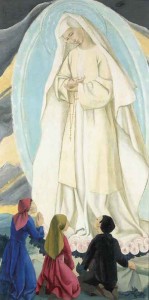
Tags: catholic, catholic podcast, catholic prayer, cathollc spirituality, confession, fatima, Fatima Reflections, Joseph Michael Mary, our lady of fatima, purgatory, reconciliation
This entry was posted on Saturday, October 22nd, 2011 at 12:01 am
You can follow any responses to this entry through the RSS 2.0 feed.


